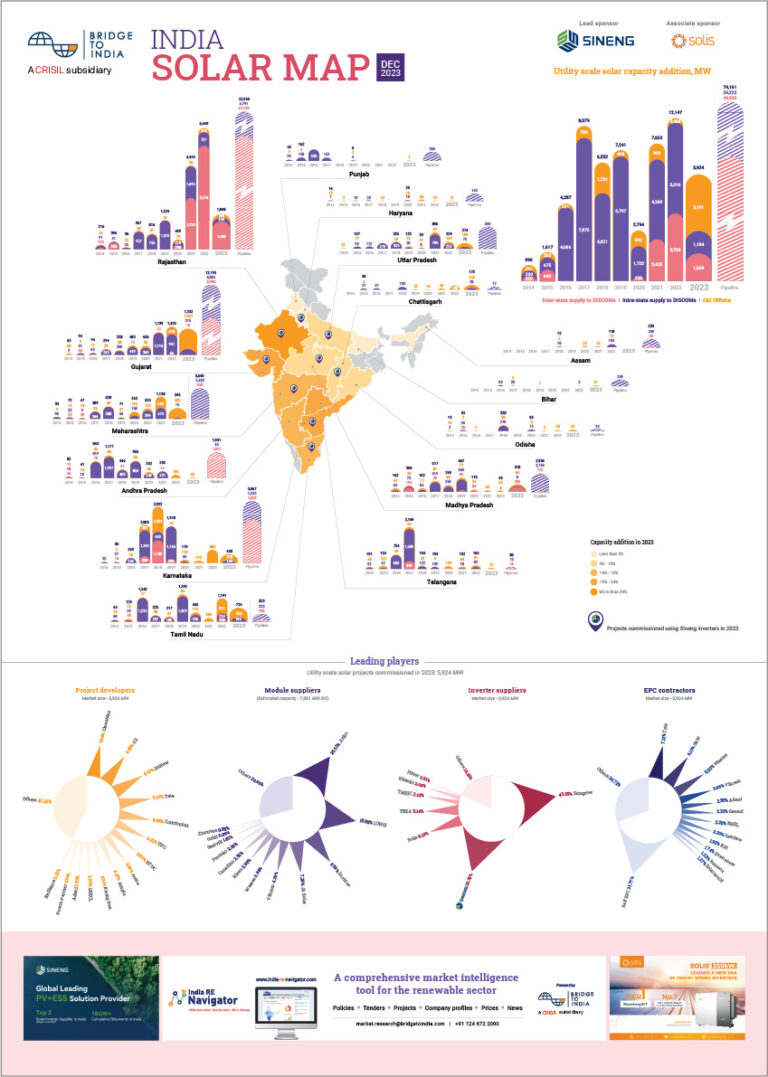BRIDGE TO INDIA estimates that new rooftop installations in 2021 touched a record high of 2,196 MW, up 62% over previous year. As of December 2021, total rooftop solar capacity is estimated at 8,988 MW, 18% of total solar capacity in the country. The increase came mainly from the residential segment, which contributed 746 MW in new installations (34% market share), an YOY increase of 108%. These numbers are highly encouraging, coming after 2 years of market decline, and in face of several acute challenges including 7% annual capex increase, modules shortage and net metering policy uncertainty in many states.
Strong residential demand
The residential market, one of the most under-penetrated segments of the renewable sector, has been gaining momentum over last couple of years with steady improvement in implementation of MNRE’s revamped subsidy scheme. Recent relaxation of the scheme whereby consumers can choose any installer rather than being restricted to installers empanelled by state governments or DISCOMs should also help going forward. MNRE has so far sanctioned subsidy for 3,162 MW capacity (scheme target 4,000 MW), out of which 1,252 MW capacity has already been installed. Gujarat leads in total tender issuance (2,200 MW) as well as total installations (992 MW). It recently issued a 1,000 MW tender, the largest residential rooftop solar tender so far. We expect the market to accelerate further with total capacity crossing 10 GW by about 2027-28.
Figure 1: New installations by consumer segment, MW

Source: BRIDGE TO INDIA research
CAPEX trumps OPEX in the C&I market
Growth in the corporate market has been muted in comparison. The larger consumers and solution providers seem to have shifted focus to open access projects in push for volume. And while high capex cost is a deterrent for many consumers, self-financed market is growing robustly. Share of the OPEX model has now been falling for three straight years.
Figure 2: C&I installations by business model, MW

Source: BRIDGE TO INDIA research
No sign of consolidation in the market
The market remains keenly fragmented across regions, consumer segments and business models. Larger utility scale players like ReNew, Azure and Statkraft have exited the OPEX business but there seem few players able to grab the opportunity. Exceptions include Fourth Partner and Amplus in the OPEX business, and Tata Power, which has made impressive gains in both business models.
Figure 3: Leading players by installed capacity in 2021

Source: BRIDGE TO INDIA research
Hostile policy environment is affecting growth
Maharashtra continues to be the leading state for C&I installations (254 MW capacity addition in the year), followed by Gujarat (173 MW), Rajasthan (138 MW), Andhra Pradesh (122 MW) and Karnataka (107 MW). The impact of regressive policy actions can be clearly seen in slowing market growth in Uttar Pradesh and Karnataka.
Figure 4: Annual capacity addition in major states, MW

Source: BRIDGE TO INDIA research Note: Data excludes residential installations.
The short-term market outlook is clouded by many factors. Firm module prices and BCD may deter customers although there is some evidence of leading installers having stockpiled modules. Need to comply with ALMM, deferred by six months to October 2022, is also a major source of uncertainty. Our estimate is that the market would grow by about 10-15% over last year, led again by the residential segment.












